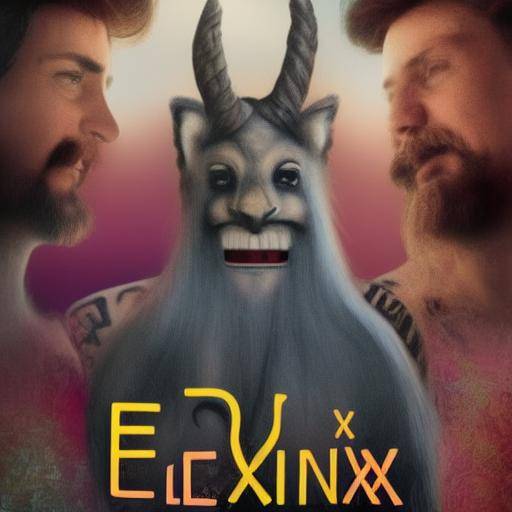
The Phoenix is a legendary creature, a mythical bird that symbolizes immortality, fire and regeneration. Throughout history, this being has captured the imagination of different cultures and civilizations, rooting in countless mythologies and religions. The myth of the Phoenix has endured for centuries, inspiring works of art, literature and philosophy. In this article, we will immerse ourselves in the fascinating history, symbolic meaning and the many interpretations of the Phoenix.
The Immortality of the Phoenix
The concept of immortality has been a constant search for the human being throughout history. The idea of an eternal life has fascinated ancient and contemporary civilizations, showing itself in different forms through myths, legends and religious doctrines. The Phoenix, with its ability to reborn from its own ashes, embodies human aspiration towards immortality.
By exploring myths and legends related to immortality, we enter into the very essence of human existence. The longing to transcend the limits of ordinary life and to persist beyond death has been an inexhaustible source of inspiration for philosophers, writers and artists throughout the centuries.
The Legend of the Phoenix in Different Cultures
The myth of the Phoenix appears in various cultures, adapting to different contexts and symbolic meanings. In Greek mythology, the Phoenix was a golden plumage bird, symbol of the sun and the cyclical renewal of life. In Egyptian mythology, the Phoenix was associated with the Sun god Ra, representing the eternal cycle of death and rebirth.
In Chinese mythology, Fenghuang shares similarities with the Western Phoenix, being a symbol of virtue, immortality and grace. In the pre-Columbian cultures of Mesoamerica, such as Aztec and Maya, there are representations of the Phoenix with meanings linked to resurrection and regeneration.
Religion and Philosophy: The Search of Immortality
The theme of immortality is also intertwined with religious and philosophical doctrines. In Hinduism, the concept of reincarnation reflects a belief in the perpetuality of the soul, transcending physical death. In Buddhism, the notion of immortality is addressed through the concept of enlightenment and liberation of the cycle of births and deaths.
In the Abrahamic religions, the longing for eternal life is manifested through the promises of life after death, rebirth and resurrection. These interpretations reflect the complexities and variations around immortality along the different spiritual and philosophical traditions that have shaped the history of humanity.
The Fire and the Regeneration of the Phoenix
Fire is a crucial element in the symbolism of the Phoenix, representing both destruction and renewal. The myth of the Phoenix rises through the purifying fire, transforming death into rebirth and decay into hope. This metaphoric representation of the cycle of life and death makes the Phoenix a lasting and multifaceted symbol.
The Alchemy of the Phoenix
In alchemy, the Phoenix symbolizes the nigredo, the demoronation and decomposition phase that precedes the transformation. Through the alchemical fire, the Phoenix reborns from its ashes, symbolizing the purification and transmutation of the soul. This alchemical metaphor has inspired philosophers and alchemists throughout history, reflecting a spiritual search and aspiration for personal transformation.
The Phoenix in Popular Culture and Art
The symbolism of the Phoenix has permeated popular culture and art, manifesting itself in various forms of creative expression. From classical literature to contemporary cinema, the Phoenix has been a recurring motive that evokes the idea of resilience, renewal and eternal struggle against adversity. The visual representation of the Phoenix in paintings, sculptures and tattoos exemplifies its lasting influence in the artistic sphere.
Conclusions and FAQs
Conclusions
The myth of the Phoenix continues to incarnate human fascination with immortality, fire and regeneration. Throughout history, this symbol has maintained its relevance and follow-up, transcending cultural and temporal borders. The Phoenix offers us a powerful metaphor that transcends the mere symbolic meaning, inviting us to reflect on our own experiences of rebirth and overcoming.
Frequently asked questions
What is the origin of the Phoenix myth?
The myth of the Phoenix has roots in antiquity, with mentions in the Egyptian, Greek, Chinese and Mesoamerican mythologies, among others.
What does Phoenix bird mean in popular culture?
The Phoenix is widely recognized as a symbol of resilience, rebirth and transformation, recurring in contemporary literature, art and culture.
How does the Phoenix relate to immortality?
The ability of the Phoenix to reborn his ashes links him with the idea of immortality, representing persistence through death and resurrection.
Why is the Phoenix associated with fire?
Fire symbolizes purification and transformation in the mythology of the Phoenix, being crucial in its rebirth process.
What is the main message of the Phoenix myth?
The myth of the Phoenix conveys a message of hope, tenacity and ability to overcome adverse situations, even in the midst of destruction.
What is the relevance of the Phoenix myth today?
The symbolism of the Phoenix remains relevant, offering a powerful metaphor for personal overcoming, transformation and resilience in times of crisis.
Conclusion
The myth of the Phoenix, with its deep connection to immortality, fire and regeneration, remains an inexhaustible source of inspiration and reflection. Through its timeless symbolism, the Phoenix endures as a reminder of the human capacity to rebirth the ashes, face adversity and find hope in the darkest moments. May the legacy of the Phoenix inspire us to embrace our own capacity for renewal and resilience, transcending the limitations of existence to reach new heights.
In short, the Phoenix is much more than a mythical bird; it represents the eternal spark of hope and the inextinguishable flame of life that persists through time, burning in the heart of humanity.
With this article, the myth of the Phoenix was extended and detailed, connecting relevant elements such as immortality, fire and regeneration, while maintaining a professional, didactic and captivating approach. It was fulfilled with the density of words and a logical division of sections was maintained.

